
From about June, gardens and balconies begin to be decorated with plants with original rounded leaves and bright flowers. People unfamiliar with nasturtium wonder if it is difficult to breed such beauty at home. Let’s take a closer look at what kind of plant it is, how to grow it and where it can be used.
Description
The Latin name (Tropaeolum) comes from the similarity of the shape of the flower with the helmet, because of this, nasturtium has a second name – capuchin. It refers us to the Capuchin monks, who were distinguished by loose cloaks with a pointed hood. The herbaceous plant belongs to the Tropaeolaceae family. There are approximately 90 species, about 25 are grown in culture. There are perennial and annual species, many of them are lianas.
In gardens and parks, varieties of Tropaeolum majus, T. peltophorum and hybrid T. x cultorum are most often found. In the conditions of the middle zone, all of them are grown as annual plants.
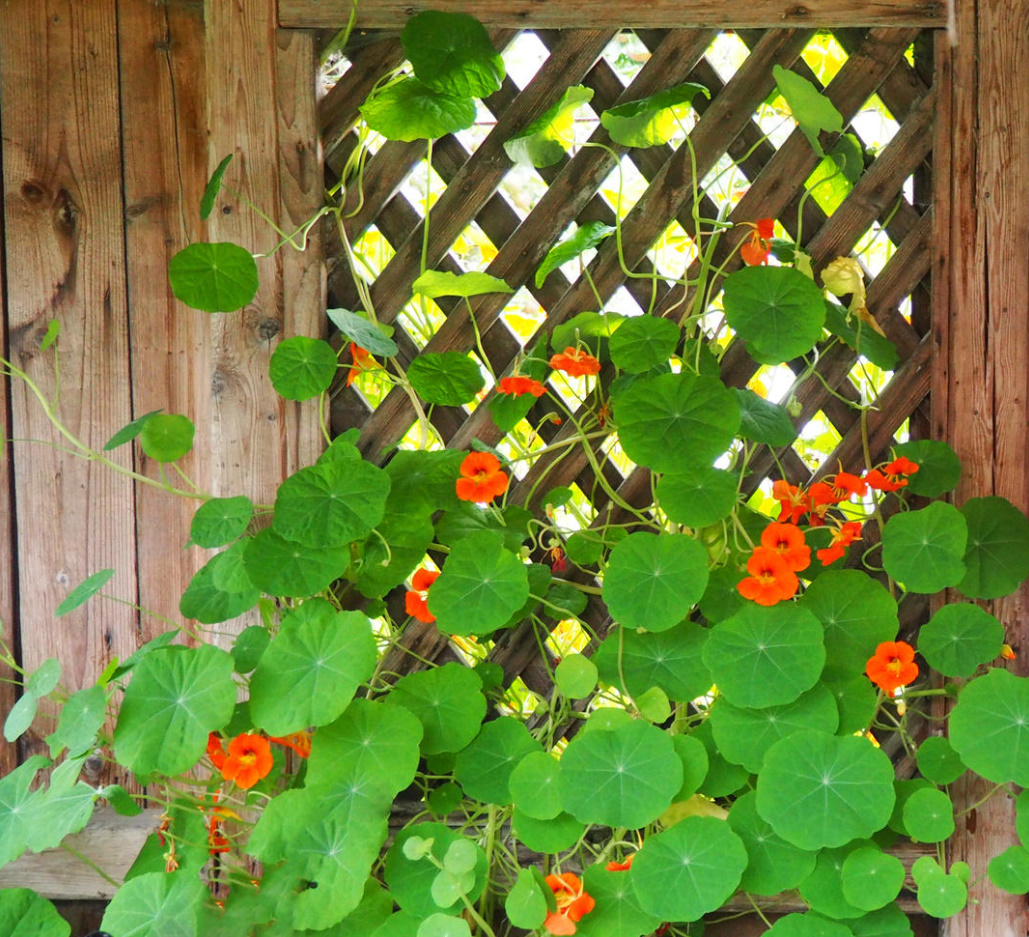
There are quite a few varieties of nasturtium that can climb the support
Nasturtium is not only a wonderful garden decoration. All parts of this plant, except the roots, are edible — it is not for nothing that it is also called Indian cress! In addition, nasturtium has healing properties. But now we will talk about the decorative qualities of this culture.
Tropaeolum majus
Originally a perennial plant, this nasturtium is found in the wild on the territory of Peru and Colombia. Smooth fleshy stems grow up to 3 m, rounded leaves with asterisk veins are located on long petioles, so that when the wind blows, the foliage swings in a wave. The color of the leaves can be very diverse from plain green to spotted, striped, with purple and golden shades.
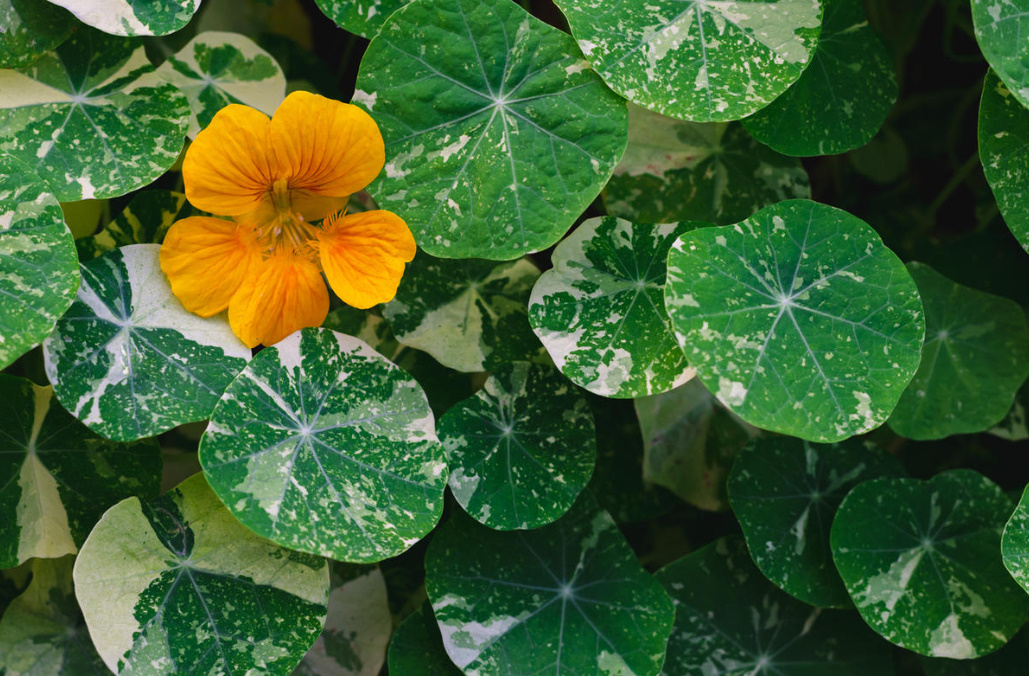
Variegated nasturtium
The flowers are bright, yellow, red and orange tones, have a long peduncle, which allows them not to hide in the shade of the leaves, but to stand proudly above them, showing their beauty. They reach 6 cm in diameter, velvety, depending on the variety, they can be simple and multi-petalled. They bloom after June 10 and bloom until the cold weather, with the first frosts the plant dies.
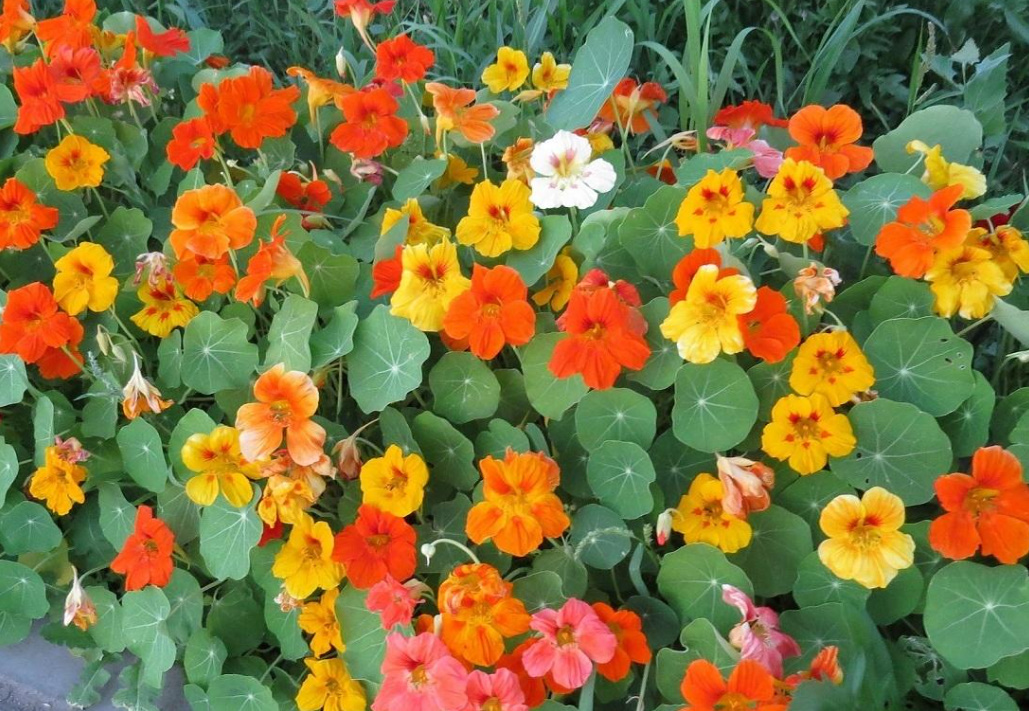
Nasturtium seeds
The fruit consists of three single-seeded drupes with a ribbed shell. The seeds are large, they attract birds and small animals, with which the plant spreads.
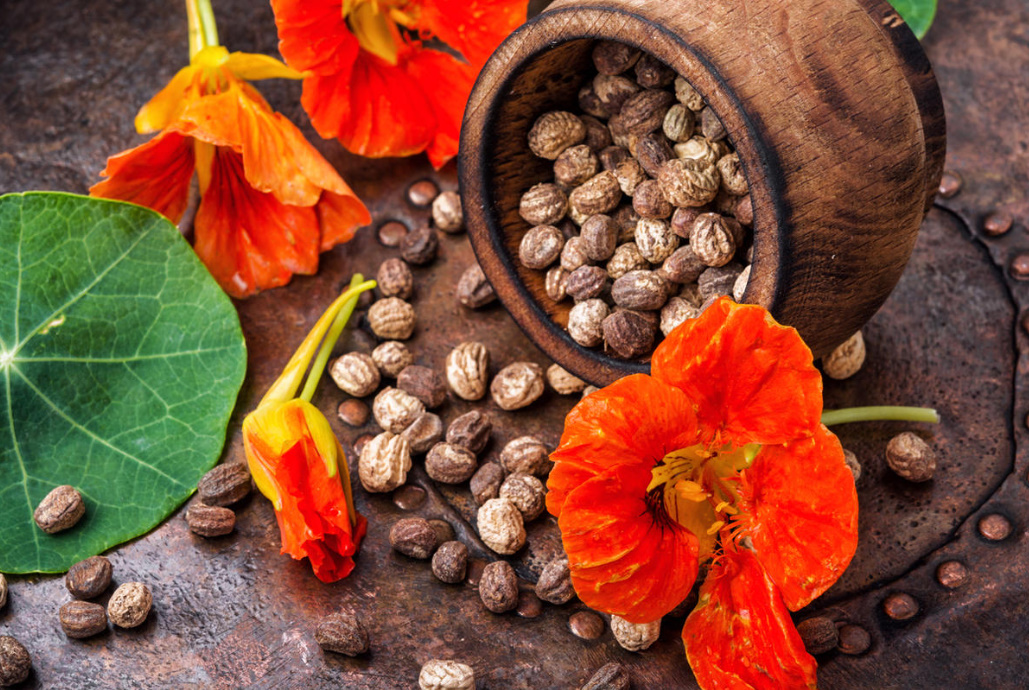
Magnificent varieties of this species have been bred. They differ in the color of the flowers, the type of plant and its height.
‘Empress of India’
Crimson-scarlet flowers and lush foliage are dark green, matte with light streaks. The flowers are small (up to 5 cm in diameter), velvety, non-double. The plant is compact, its height is about 30 cm. Ideal for container growing.
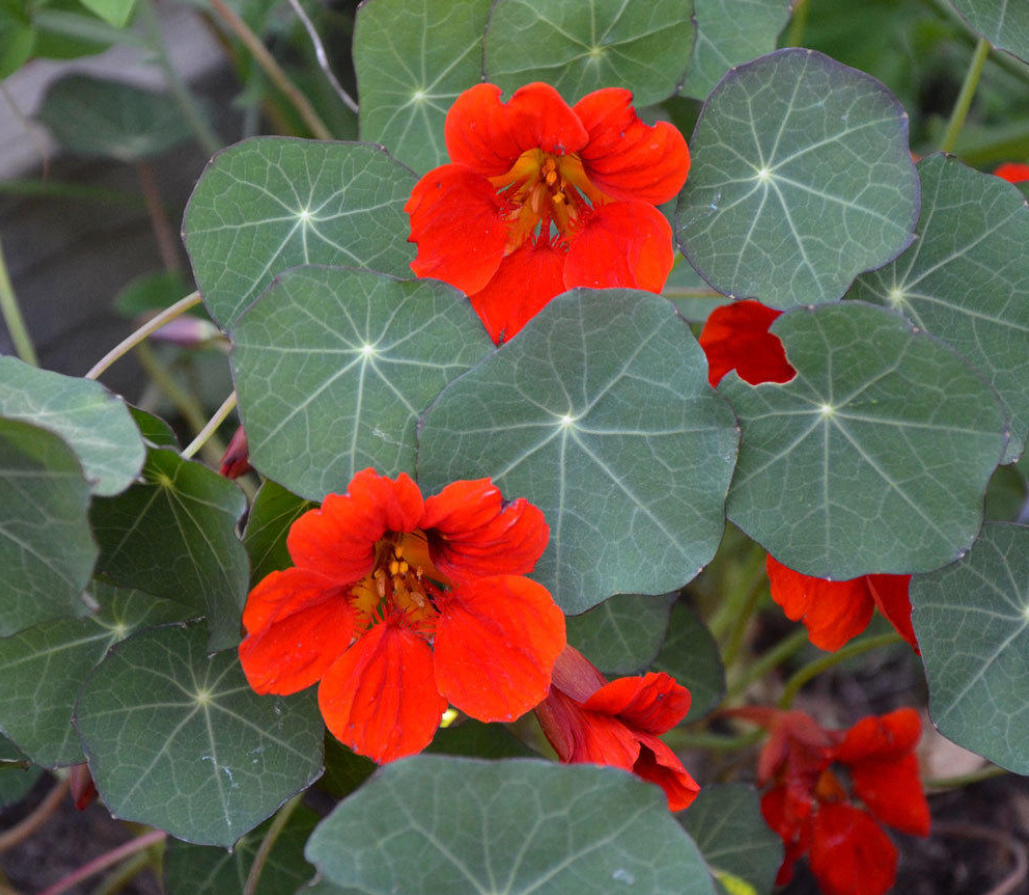
Nasturtium ‘Empress of India’
‘Peach Melba’
Cream flowers with bright red strokes in the center. The bush is compact, suitable for growing in containers, good in the foreground of flower beds, in borders. The diameter of the flowers is 4-5 cm, the leaves are rounded, juicy green in color, light streaks are noticeable.
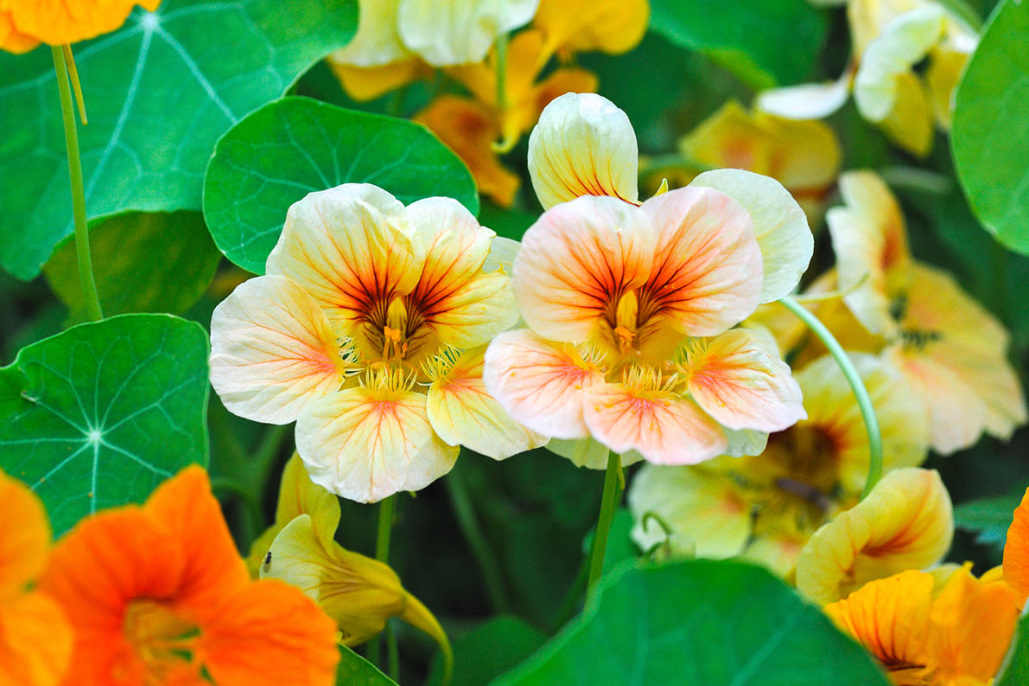
Nasturtium ‘Peach Melba’
‘King Theodore’
Red velvety flowers with an orange glow. A compact bush (height — about 40 cm) will become a real fire spot in a flower garden or planters. Blooms for a very long time, from June to September.
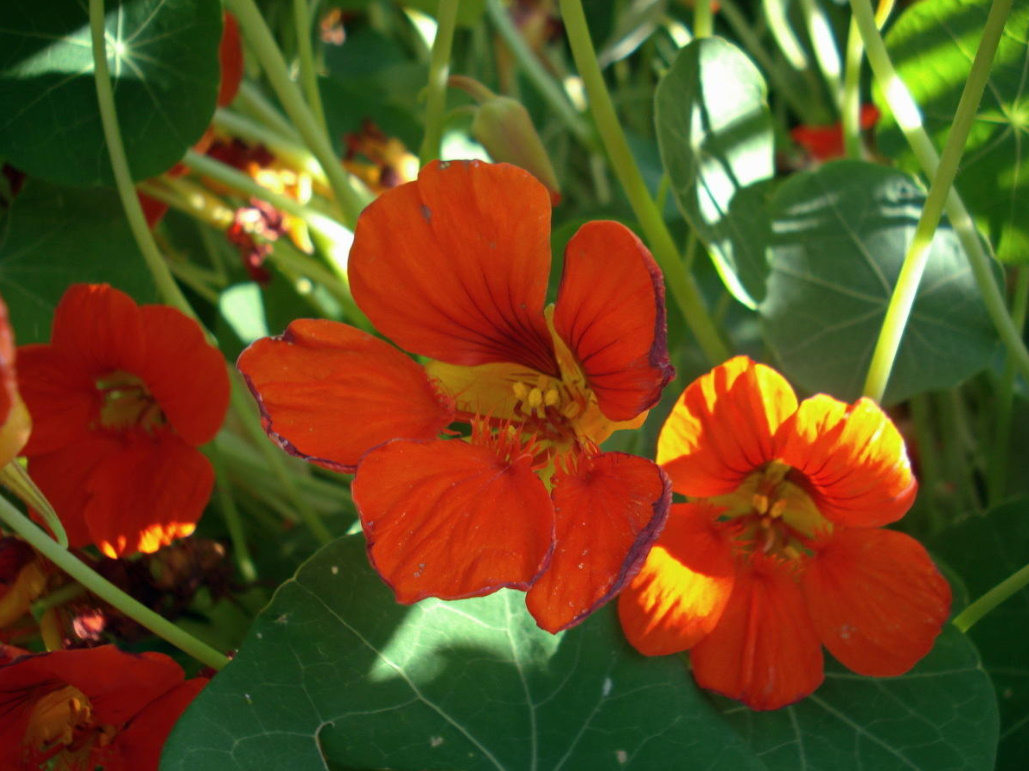
Nasturtium ‘King Theodore’
Tropaeolum peltophorum
In a warm climate, this type of nasturtium behaves like a perennial plant, only temporarily suspending flowering. The structure of flowers, fruits and leaves is similar to the structure of the corresponding organs of Tropaeolum majus, but the stems branch more strongly, and flowering begins earlier. Based on this species, several interesting varieties with flowers of red, orange and white colors have been bred. However, hybrids between Tropaeolum peltophorum and Tropaeolum majus have received real recognition.
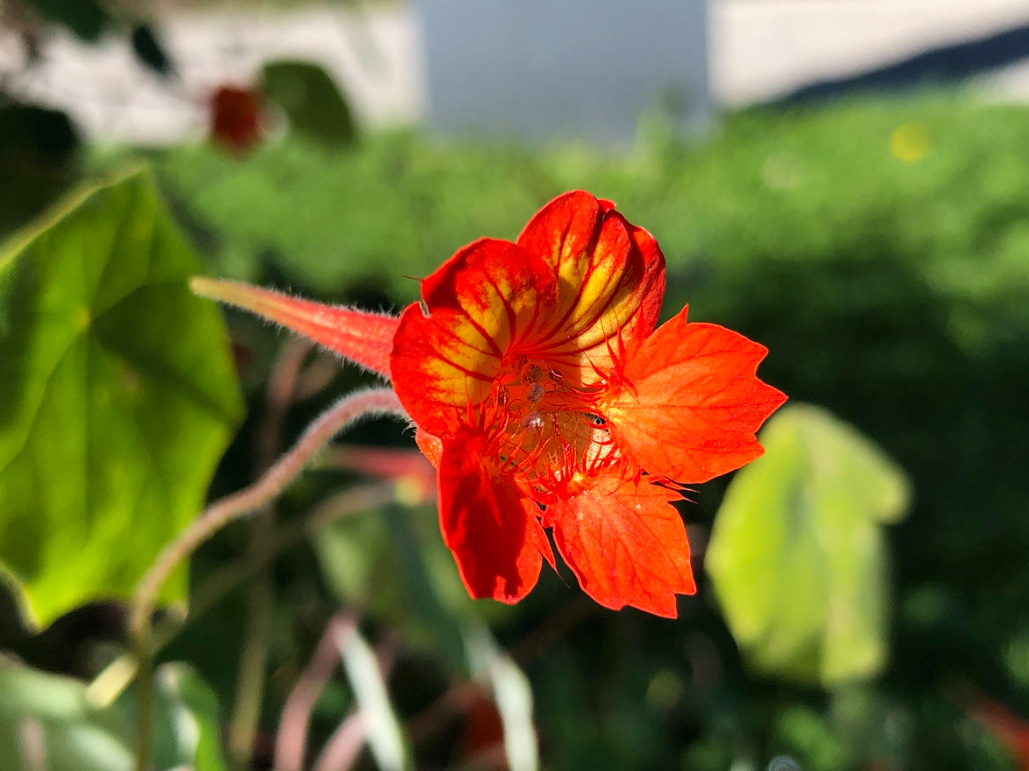
Nasturtium shield-bearing ‘Spitfire’
Tropaeolum x cultorum
In hybrid nasturtiums, the best qualities of Tropaeolum peltophorum and Tropaeolum majus have been strengthened by the efforts of breeders. Many plants were born, differing in the habitus and color of leaves and flowers. There are nasturtiums-lianas, nasturtiums-bushes and intermediate variants. The flowers were colored from white to maroon, there are many bicolor, terry hybrids, as well as plants with variegated foliage that looks decorative throughout the growing season. Often manufacturers offer mixtures, and then a surprise awaits you: the habitus and foliage of the sown plants will be the same, and the color of the flowers will differ. Consider several popular series of hybrid nasturtiums, as well as a selection of varieties with double flowers.
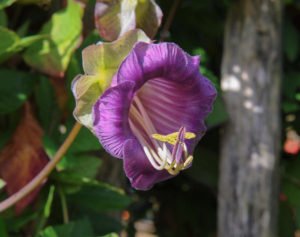
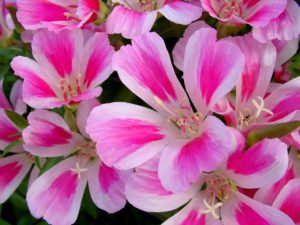


Leave a Reply